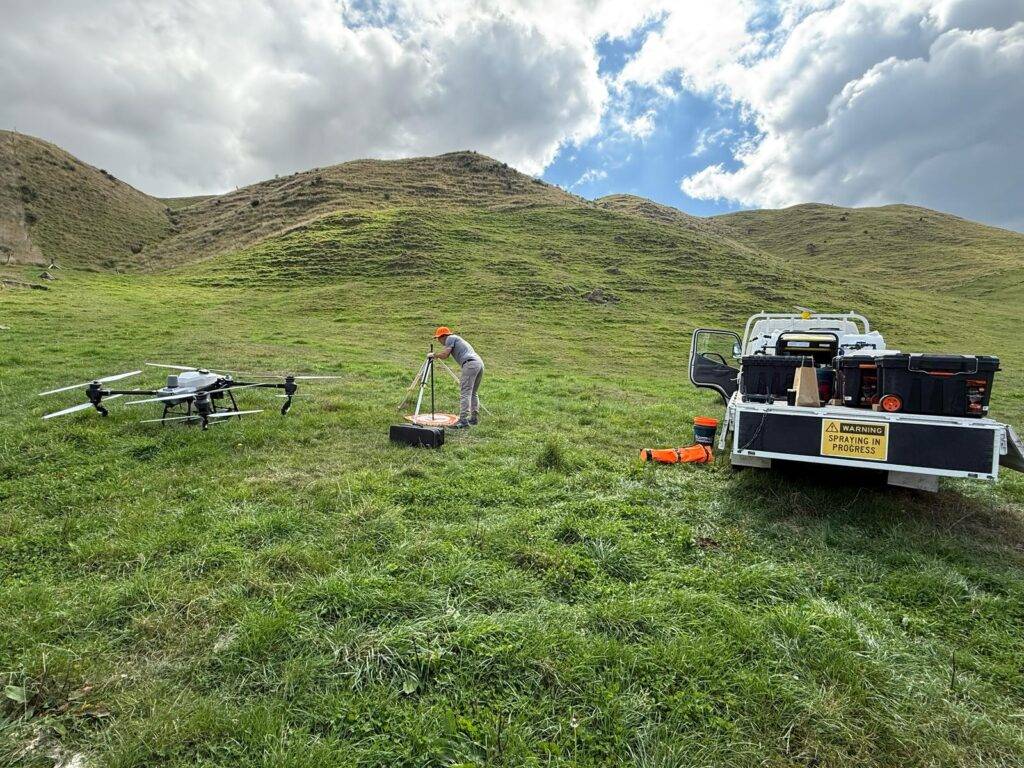Farming in the Bay of Plenty and Waikato is evolving quickly, and nowhere is this progress more visible than in the rise of precision drone spraying. As growers look for smarter ways to manage crops, reduce costs, and care for the environment, drone technology is taking centre stage. At SkySeed Drones, we’ve seen first-hand how spraying drones are helping New Zealand farmers produce better results with less waste and disruption. If you’re curious about high-tech tools that can make your work easier and more sustainable, read on to discover how drone spraying is reshaping the future of agriculture across the region.
Why Change How We Spray?
Traditional crop spraying has long relied on heavy machinery or manned aircraft. While these methods can cover large areas, they often come with challenges—soil compaction from tractors, chemical drift, high labour and fuel costs, and difficulty accessing tricky or waterlogged ground.
For farmers managing crops like corn, soybeans, wheat, and mixed pastures, these hurdles can mean higher input costs and inconsistent results. Drones are helping to rewrite that narrative. Compact, nimble, and GPS-guided, spraying drones operate with minimal impact on your land and allow for precision targeting that simply isn’t possible with a boom sprayer.
This means less chemical waste, reduced off-target application, and the ability to treat areas that are hard to reach by other means, even after heavy rain or when paddocks are too soft for vehicles.
How Effective Is Drone Spraying?
The results speak for themselves. Modern agricultural drones are now equipped with advanced technology that allows for centimetre-accurate spraying across a variety of terrains and crop types. Whether you’re keeping pasture free of broadleaf weeds, targeting insect pests in maize, or applying fungicide in a wheat field, drones deliver uniform, repeatable coverage.
Many New Zealand farms have shifted to drone application for jobs once considered too small or fiddly for tractors, or where weather conditions limited ground-based access. Because drones can be rapidly deployed and adjust to field conditions on the fly, the turnaround from planning to completed spraying is much faster than with traditional contractors.
By skipping the need for large, heavy machinery, you reduce the risk of damaging soil structure or compacting wet ground—a real advantage for protecting long-term soil health.
Drones also complement other precision farming practices, allowing you to take full advantage of crop health imaging and tailored spray recommendations. When data shows a trouble spot in a paddock, you can send a spraying drone directly to that area, minimising input use and costs.

How Much Area Can a Drone Spray?
One of the first questions we’re asked is how much ground drones can actually cover in a day. The answer depends on the model, payload size, field conditions, and chemical rates. At SkySeed Drones, our spraying drones typically treat 10 to 20 hectares per day for targeted applications, with the ability to scale higher (30 to 40 hectares per drone) for broad-acre blocks and pasture works due to fast battery swaps and on-site refills.
This makes drones ideal for precision jobs where you don’t want to treat the whole paddock, as well as for efficiently managing larger operations with multiple fields. For spot spraying, borders, headlands, or wet areas that ground rigs can’t access, drones are hard to beat.
Making a Positive Impact on the Land
One of the biggest benefits of drone crop spraying isn’t just in cost savings—it’s the positive effect on the environment and your long-term farm viability. By applying chemicals only where and when they’re needed, you limit total chemical use, reduce spray drift, and cut down on fuel consumption. No more tractor tracks left in soft ground or damaged crops from heavy wheels. With drones, your spray program becomes lighter and more precise.
SkySeed’s GPS guidance ensures each droplet lands exactly where it’s needed for the most effective result with the least waste. This data-driven approach helps you meet growing sustainability standards while protecting beneficial insects and soil organisms essential to your farm’s resilience.
For farmers focused on sustainability, incorporating drone spraying can be a key step towards certification or meeting regional compliance standards. It’s also a practical answer to pressures like rising chemical costs and more unpredictable weather patterns.
Beyond Spraying—A Whole-Farm Solution
Drones in agriculture have many faces. While spraying is one of the most sought-after services, our technology goes further, offering agricultural drone services in the Bay of Plenty and Waikato from crop health analysis to seeding. Want to improve pasture cover after a wet season, or quickly reseed a paddock in autumn? Drone seeding uses the same GPS-driven accuracy to lay down seed evenly, even where tractors can’t safely go.
Through multispectral imaging, we can map crop health and highlight where intervention is needed most. This means every spray or nutrition decision you make is backed by localised data, making your program smarter and more responsive with each season.
Can You Spray Crops With a Drone?
Absolutely. Our team provides safe, efficient, and legal drone application for insecticides, fungicides, herbicides, and foliar fertilisers. All operations comply with CAA regulations and our pilots are highly trained, so you can be confident your investment and compliance are in good hands. Whether you need spot-spraying for weeds on hillsides, or broad-acre coverage for disease prevention, drone spraying fits seamlessly into a modern cropping system.
